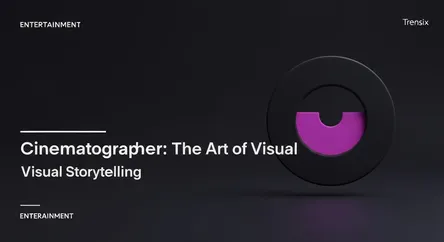Entertainment
Cinematographer: The Art of Visual Storytelling

Explore the role of the cinematographer, the artist behind the camera who crafts a film's visual identity and emotional tone through light and framing.
What is it?
A cinematographer, often called the Director of Photography (DP), is the creative leader responsible for a film's visual language. Working closely with the director, they make crucial decisions about lighting, camera choice, lens selection, framing, and movement. They are essentially painters of light, using their technical expertise and artistic vision to translate a script's narrative and emotional core into compelling images that form the final film.
Why is it trending?
The role is gaining mainstream recognition as audiences become more cineliterate. High-profile cinematographers like Hoyte van Hoytema (Oppenheimer) and Roger Deakins (1917) are now celebrated figures. The rise of visually ambitious streaming content and behind-the-scenes features has shed light on their craft, highlighting how cinematography is essential for creating the immersive, high-quality experiences viewers now demand.
How does it affect people?
Cinematography directly manipulates an audience's emotional and psychological response. The choice of a warm color palette can evoke nostalgia, while stark, high-contrast lighting might create suspense or dread. Camera movement can generate excitement or intimacy. The cinematographer is the visual architect of a story, shaping how viewers perceive characters, understand the plot, and feel the intended mood of every single scene.